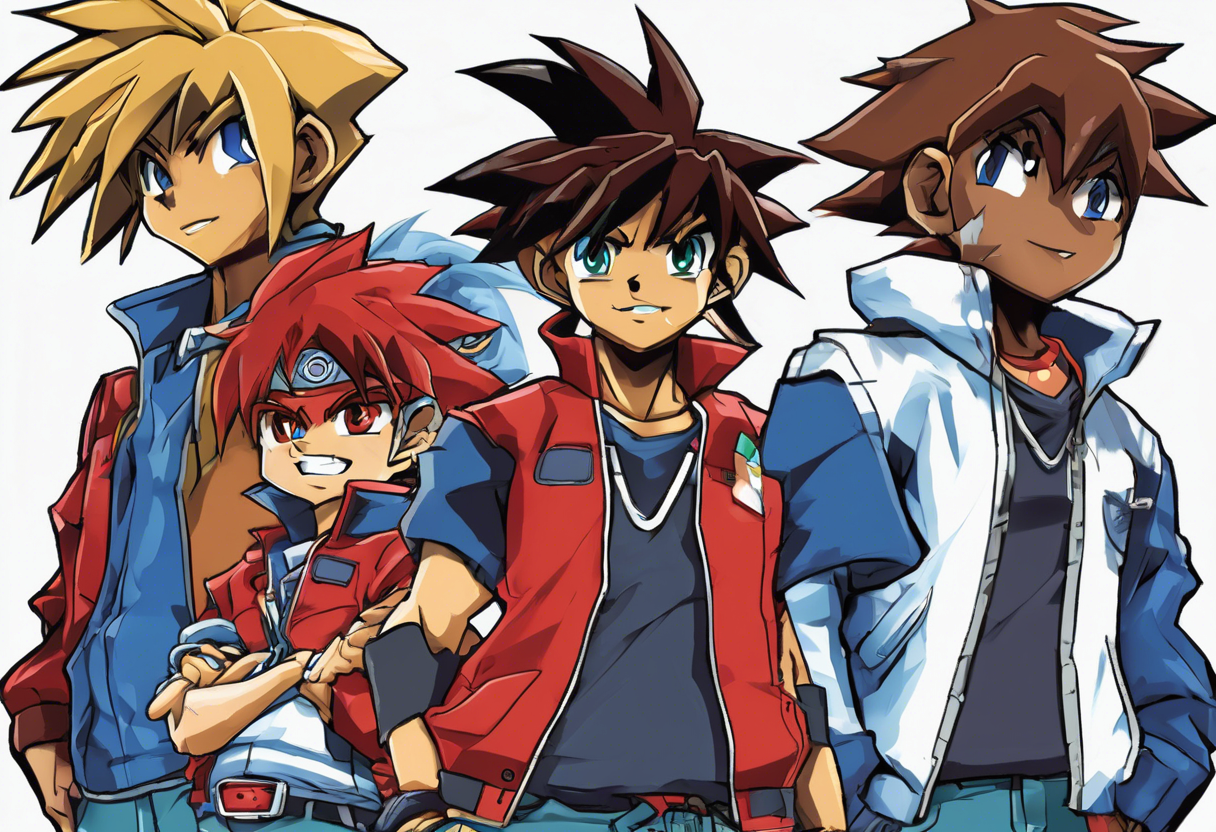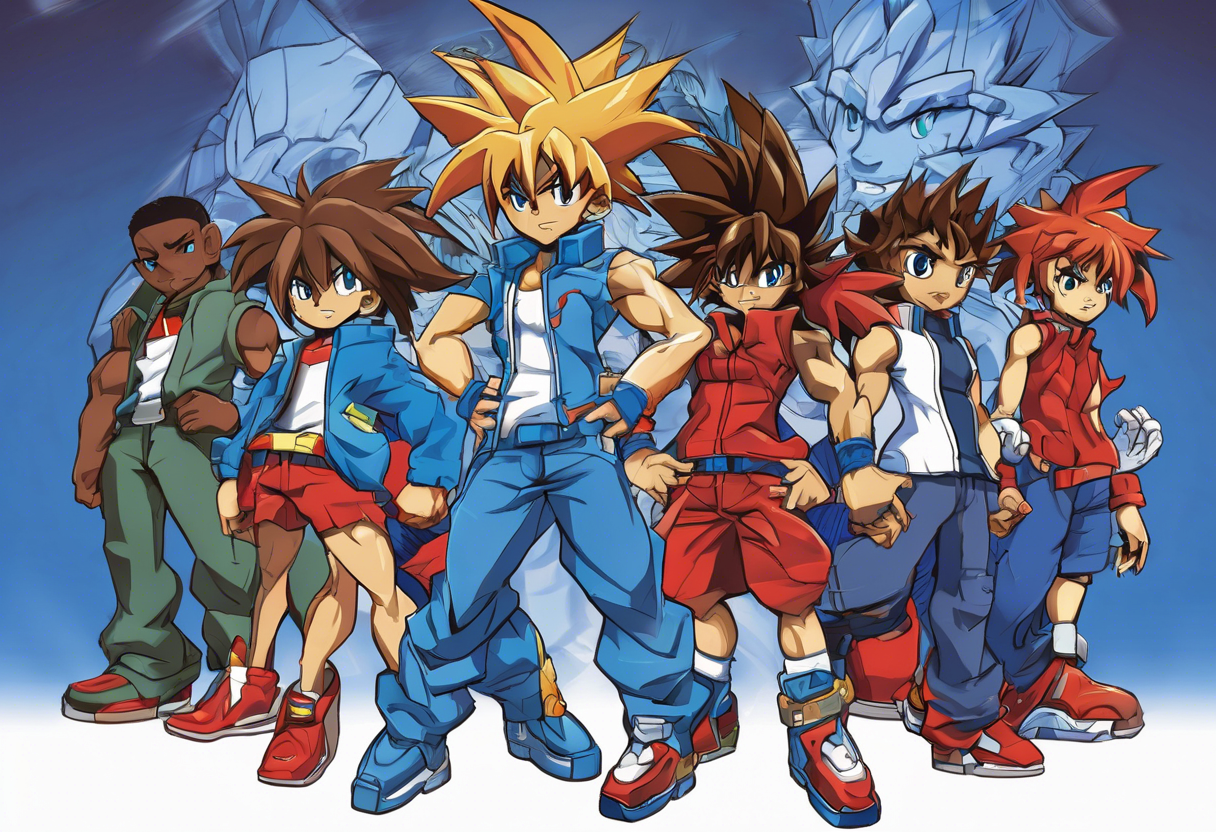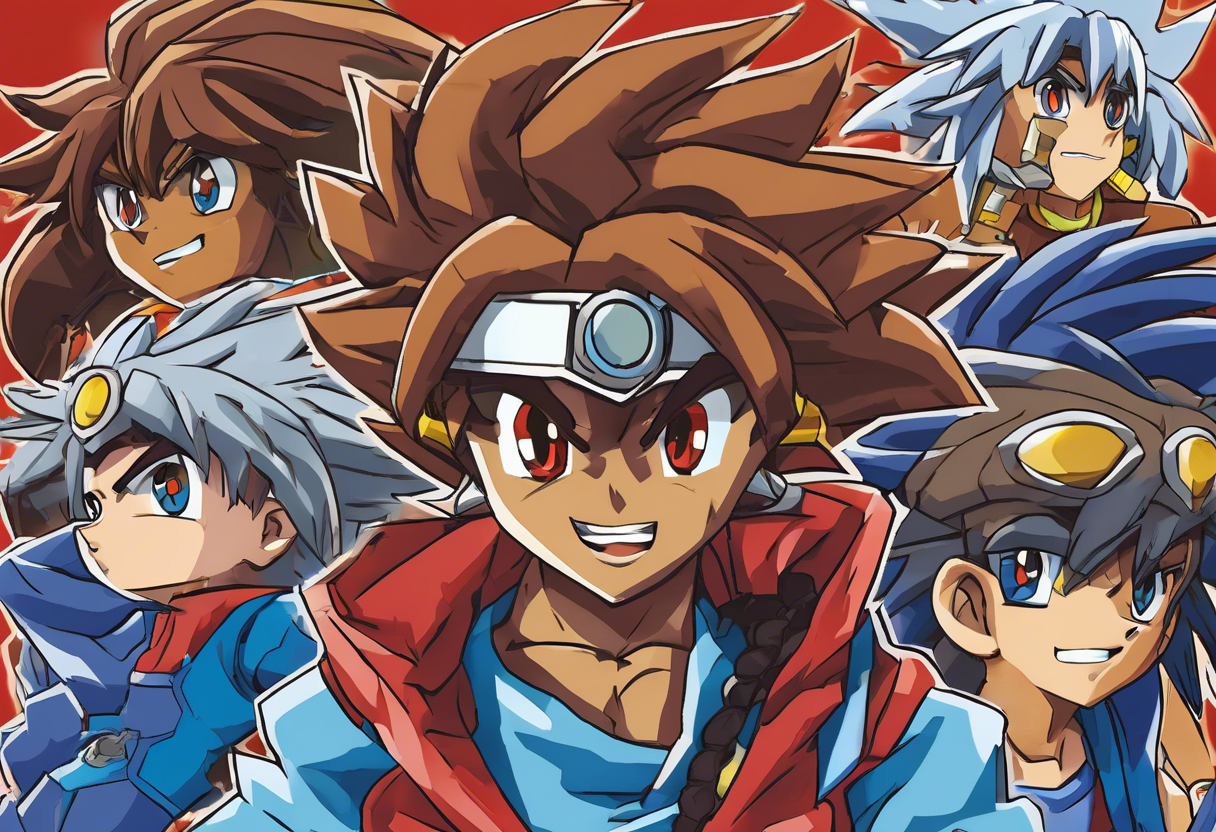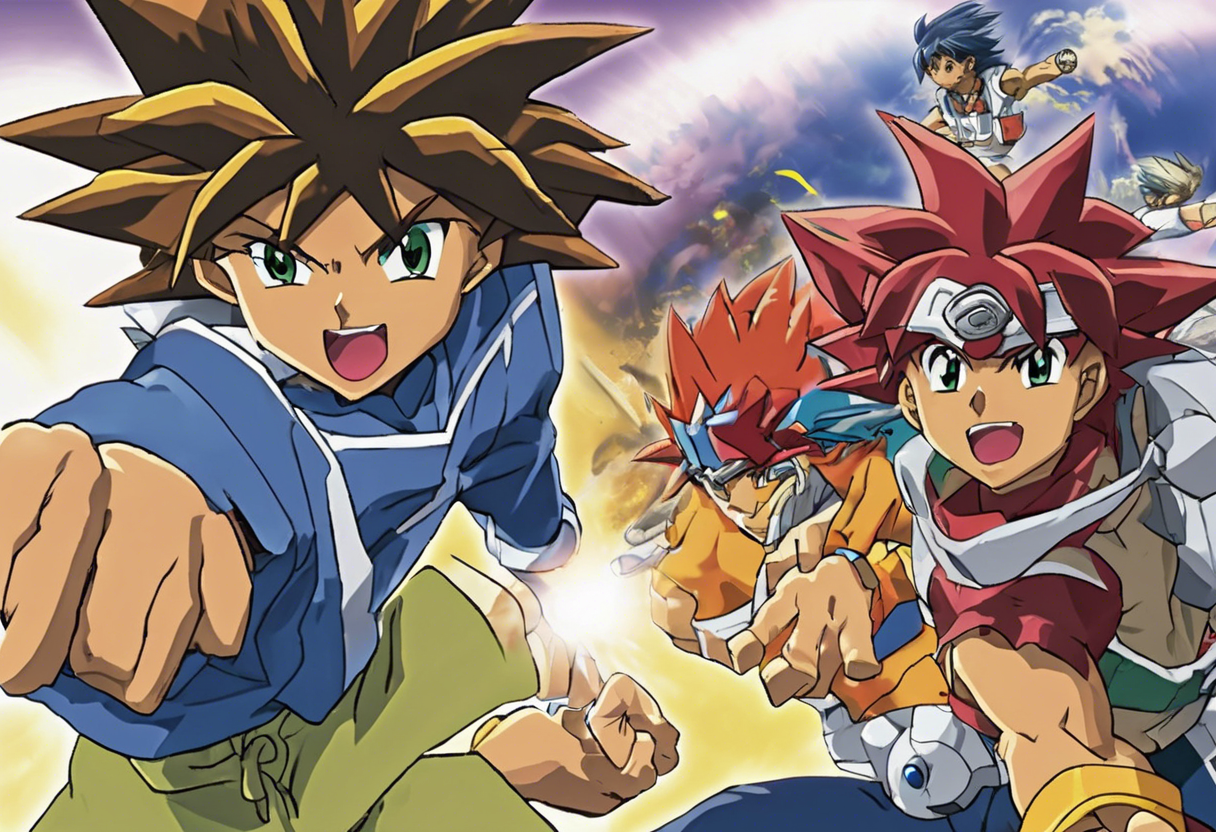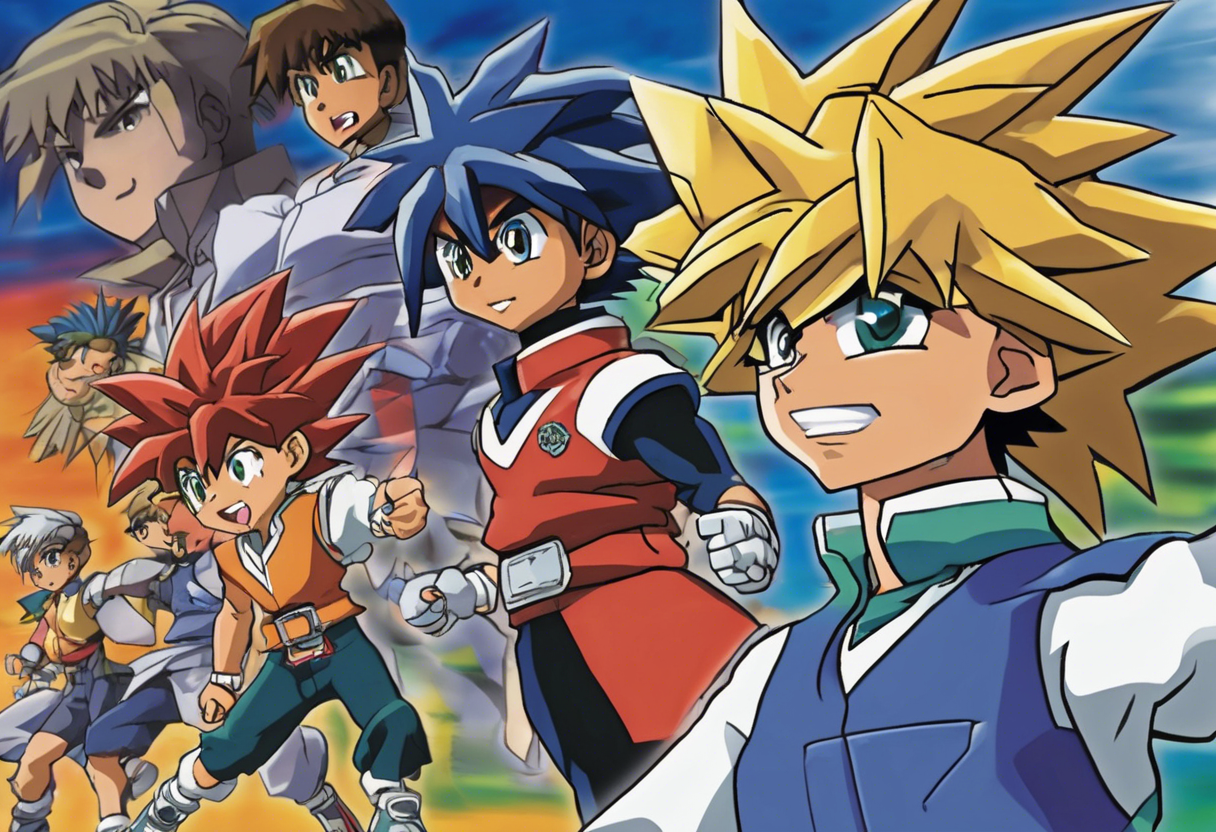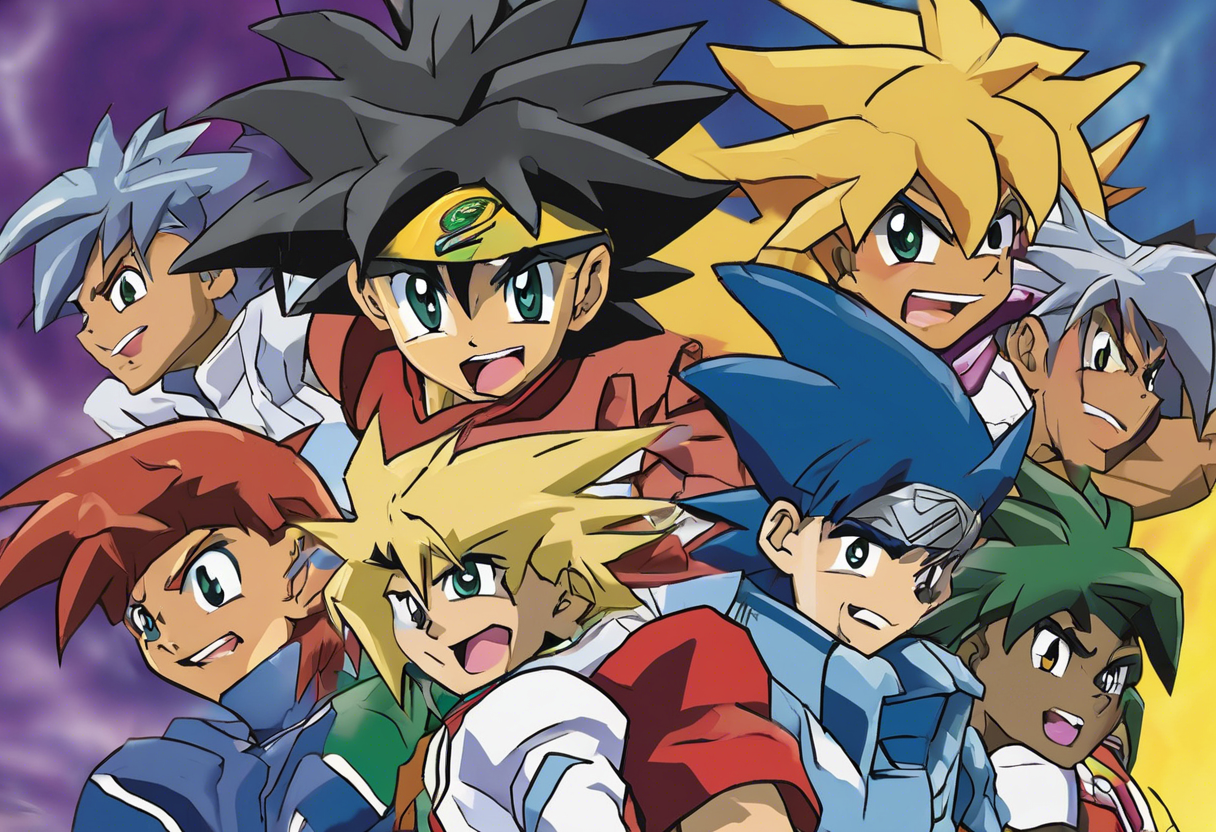Contents
Beyblade (2001) – Episode 4: The Qualifier Begins
Introduction
"Beyblade," the 2001 Japanese anime series, is based on Takao Aoki’s manga of the same name and marks the beginning of the popular Beyblade franchise. The series, also known as "Bakuten Shoot Beyblade" in Japan, premiered on TV Tokyo on January 8, 2001, and was later broadcast in English from July 6, 2002 [2][4].
Episode 4, "The Qualifier Begins," is part of the first season, which consists of 51 episodes. The series was produced by Madhouse and directed by Toshifumi Kawase, with Hiro Masaki serving as the series composer [1][4].
This episode stands out within its genre for its blend of adventure, comedy, and sports elements, focusing on the competitive world of Beyblading. The series follows the journey of 13-year-old Tyson Granger (Takao Kinomiya in the Japanese version) and his friends as they strive to become the greatest Beybladers in the world.
Plot Summary
In "The Qualifier Begins," the story delves into the early stages of the regional Beyblade tournament, a crucial step for the Bladebreakers to qualify for the national championships. The episode opens with Tyson Granger, the enthusiastic and determined leader of the Bladebreakers, along with his teammates Kai Hiwatari, Max Tate (Max Mizuhura), and Ray Kon (Rei Kon), preparing for the regional qualifiers.
The scene shifts to the bustling city where the tournament is about to commence. The atmosphere is electric, with numerous young Beybladers and their families gathering at the venue. Tyson and his friends are eager to showcase their skills and advance to the next round.
As the qualifiers begin, the Bladebreakers face off against various opponents, each with their unique Beyblades and strategies. The competition is fierce, and the team quickly realizes that they are not the only skilled Beybladers in the region. The episode highlights the technical aspects of Beyblading, such as the different types of Beyblades, the importance of bit-beasts, and the strategic decisions made by the players during matches.
One of the central conflicts in this episode arises when Tyson and his friends encounter a group of tough opponents who seem almost unbeatable. This challenge pushes the Bladebreakers to their limits, forcing them to rely on their teamwork, quick thinking, and the special abilities of their bit-beasts.
Kai Hiwatari, known for his cold and distant demeanor, plays a pivotal role in this episode. His bit-beast, Dranzer, proves to be a formidable opponent, but Kai’s personal struggles and doubts about his place in the team are also explored. This internal conflict adds a layer of depth to his character and sets the stage for future developments in the series.
Meanwhile, Max Tate, the team’s strategist, works tirelessly to analyze their opponents’ moves and develop effective counter-strategies. His analytical mind and technical expertise are crucial in helping the Bladebreakers overcome their challenges.
Ray Kon, the newest member of the team, continues to adjust to the dynamics of the group. His unique bit-beast, Driger, and his calm yet determined approach to battles make him a valuable asset to the team.
Throughout the episode, the characters’ interactions and relationships are further developed. Tyson’s leadership and enthusiasm are contrasted with Kai’s reserved nature, while Max’s strategic thinking complements Ray’s intuitive blading style. These character dynamics are essential to the team’s success and add a rich layer of storytelling to the episode.
The setting of the regional tournament provides a vibrant backdrop for the action. The venue is filled with excited spectators, and the tension builds as each match concludes. The animation brings the high-energy battles to life, showcasing the intricate designs of the Beyblades and the dramatic clashes between them.
As the qualifiers progress, the Bladebreakers face their toughest challenge yet: a match against a team that seems almost invincible. The episode culminates in an intense battle where the team’s unity, skill, and determination are put to the ultimate test.
In the end, the Bladebreakers emerge victorious, but not without realizing that there are even greater challenges ahead. The episode concludes with a sense of accomplishment and anticipation, setting the stage for the next phase of their journey.
Themes and Symbolism
"The Qualifier Begins" explores several central themes that are pivotal to the Beyblade series. One of the most prominent themes is the importance of teamwork and friendship. The Bladebreakers’ success is not solely due to individual skills but rather the collective effort and support they provide each other. This theme is symbolized through the characters’ interactions and the way they work together to overcome obstacles.
Another significant theme is perseverance and determination. Tyson and his friends face numerous challenges, but they never give up. This determination is symbolized by their relentless practice and their refusal to accept defeat. The episode shows how these qualities are essential for achieving their goals and overcoming adversity.
The concept of rivalry is also a key element in this episode. The competition between the Bladebreakers and their opponents serves as a catalyst for character development and plot progression. This rivalry symbolizes the drive for excellence and the continuous improvement that is necessary in competitive environments.
The bit-beasts, which are central to the Beyblade universe, also carry symbolic meaning. They represent the unique abilities and strengths of each character, as well as their emotional connections to their Beyblades. The bit-beasts serve as a metaphor for the inner power and potential that each character possesses.
Cultural Impact
"The Qualifier Begins" and the broader Beyblade series have had a significant cultural impact since their release. The series helped popularize the toy franchise of Beyblades, turning it into a global phenomenon. The anime’s success led to numerous adaptations, including video games, movies, and subsequent seasons of the anime [2][4].
The series also influenced popular culture, with references to Beyblade appearing in various forms of media. The competitive spirit and the unique concept of spinning tops as a sport resonated with audiences worldwide.
Critical Reception
Upon its release, "The Qualifier Begins" and the first season of Beyblade received generally positive reviews from both critics and audiences. The series was praised for its engaging storyline, well-developed characters, and the exciting action sequences [4].
Critics noted the series’ ability to balance action, comedy, and drama, making it appealing to a wide range of viewers. However, some critics pointed out that the series followed a somewhat predictable tournament arc, a common critique of many sports anime.
Despite these criticisms, the series remained popular and has since become a classic in the anime genre.
Legacy
"The Qualifier Begins" and the Beyblade series as a whole have left a lasting legacy in the world of anime and beyond. The series continues to inspire new generations of fans and has influenced numerous other anime and manga series.
The concept of competitive sports anime has been refined and expanded upon by other series, but Beyblade remains one of the pioneers in this genre. The series’ blend of action, adventure, and friendship has made it a beloved classic that continues to be enjoyed by audiences today.

